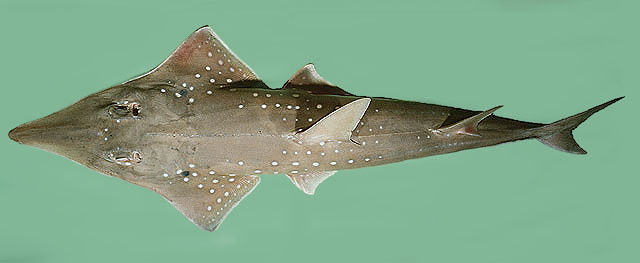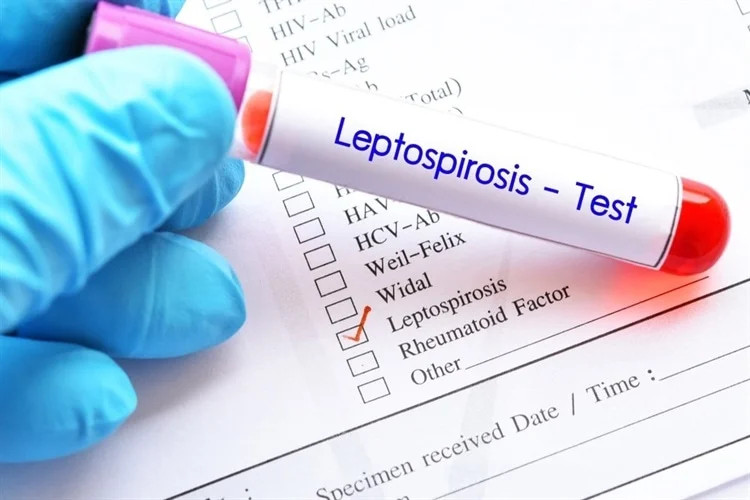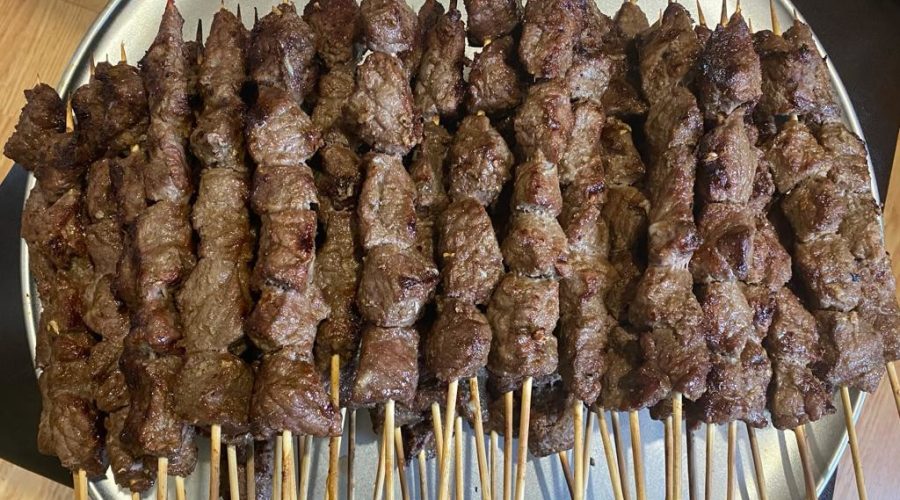Rehema J. Simwanza and Cyrus Rumisha
Department of Animal, Aquaculture and Range Sciences
Summary
Populations of the bottlenose wedgefish (Rhynchobatus australiae) in the Indo-West Pacific (IWP) have declined by nearly 80% in recent decades. In response, IWP countries are establishing sanctuaries to provide refuge for the fish. However, little is known about the genetic stock structure of the fish in the region. Hence, this study analysed partial sequences (610 base pairs) of the cytochrome oxidase subunit (COI) gene from eight bottlenose wedgefish populations in the IWP to assess the genetic stock structure of the fishery. The sequences revealed that Western Indian Ocean (WIO) populations are genetically distinct from those in the West Pacific (WP) (FCT = 0.24, p = 0.01) and Australia (FCT = 0.88, p = 0.01). Similarly, WP populations were genetically distinct from Australian populations (FCT = 0.42, p = 0.01). This suggests that the IWP contains three genetically distinct stocks of the bottlenose wedgefish: the WIO, WP, and Australia. The indices of genetic diversity and population size showed that the WIO stock has low genetic diversity and population size when compared to the WP and Australia. This shows that efforts to establish elasmobranch sanctuaries in the IWP should take into account the three identified stocks, with priority given to the WIO.
Introduction
The bottlenose wedgefish Rhynchobatus australiae Whitley, 1939 is a large benthopelagic shark-like batoid found throughout the Indo-West Pacific (IWP), from the Western Indian Ocean (WIO) to the Western Pacific (WP) Ocean (White and Last 2013, Bineesh et al. 2017). The fish is distinguished from other wedgefishes by its bottle-shaped snout, and it can be found in inshore waters from near shore to depths of 60 meters (Kyne et al. 2019). The wedgefish has long been used as a food source for many coastal communities in the IWP (Daly et al. 2021). Yet, they have been fished to alarmingly low levels throughout the IWP due to poor management and high demand for their fins in Asian markets (Clark-Shen et al. 2021). As a result, catch records show that stocks of bottlenose wedgefishes have plummeted by roughly 80% in the Arabian Sea and surrounding waters during the last three decades (Valinassab and Dulvy 2018). Similarly, studies show that catch and abundance of bottlenose wedgefish in the Eastern and Western Indian Ocean have declined by over 65% since 1977 (Faizah and Chodrijah 2020, Daly et al. 2021, Wulandari et al. 2021). Because they grow slowly and produce few young, the decline presents an extremely high risk of extinction (Spaet and Berumen 2015). In response, the fish was classified by the IUCN Red List of Threatened Species as critically endangered globally (Kyne et al. 2019). Similarly, the Convention on International Trade in Endangered Species of Wild Fauna and Flora (CITES) has acted to regulate international trade in bottlenose wedgefish by listing the fish in Appendix II. This implies that the fish cannot be exported to international markets without a permit issued by the authority of the exporting country confirming that it was caught according to national laws, and that the trade is not harmful for the survival of the species (Cardeñosa et al. 2018). Additionally, some countries in the IWP have acted by banning finning and trade of bottlenose wedgefish and their products. Furthermore, since 2009, one country in the WIO and sixteen countries in the Pacific have designated their Exclusive Economic Zones (EEZ) as shark sanctuaries in order to protect and recover bottlenose wedgefish and other elasmobranch by reducing fishing mortality (Ward-Paige and Worm 2017). These sanctuaries currently cover more than 3% of the global ocean, and more countries are likely to follow suit (Ward-Paige 2017). Despite the recent progress towards the establishment of shark sanctuaries, little is known about the genetic stock structure of bottlenose wedgefish in the IWP. The few available data show significant genetic divergence between the Andaman Sea and Southeast Asia (ΦST = 0.249, p < 0.00001) as well as Southeast Asia and Australia (ΦST = 0.260, p < 0.00001), indicating that the fish in these regions should be managed as separate stocks (Giles et al. 2016). Yet, the pattern of genetic connectivity between bottlenose wedgefish populations in the WIO and other populations in the IWP is largely unknown. Because evidence of significant genetic divergence between the WIO, Eastern Indian Ocean (EIO) and WP have been documented in other marine fauna (Otwoma and Kochzius 2016, Huyghe and Kochzius 2018), distinct stocks of bottlenose wedgefish may also exist in the region. Therefore, there is a need to assess the patterns of genetic connectivity among the bottlenose wedgefish in the IWP to evaluate whether there are distinct stocks which should be managed independently. Generally, delineation of stocks is very crucial for effective management, since implementing conservation policies and fisheries management measures without taking genetic stock structures into account often leads to failed recovery and impede sustainable fisheries management (Kerr et al. 2017). Therefore, this study aimed to assess the genetic stock structure of the bottlenose wedgefish in the IWP.
For more information: Click here
Rehema J. Simwanza, R.J. and Rumisha, C. (2023). Evidence of Distinct Genetic Stocks of the Bottlenose Wedgefish (Rhynchobatus australiae) in the Indo-West Pacific. Tanzania Journal of Science 49(1): 86-95, 2023. doi: https://dx.doi.org/10.4314/tjs.v49i1.8
Share this page




